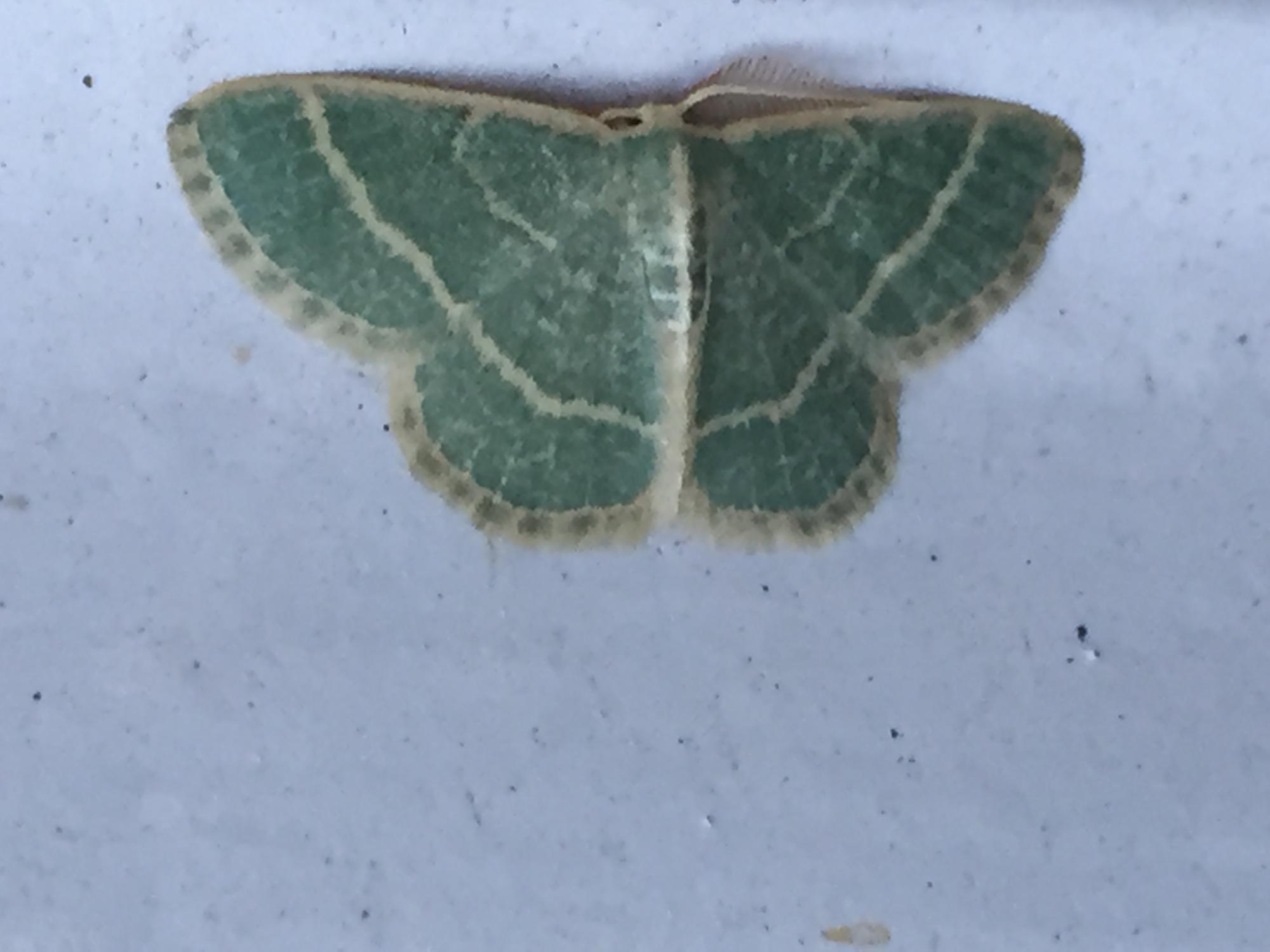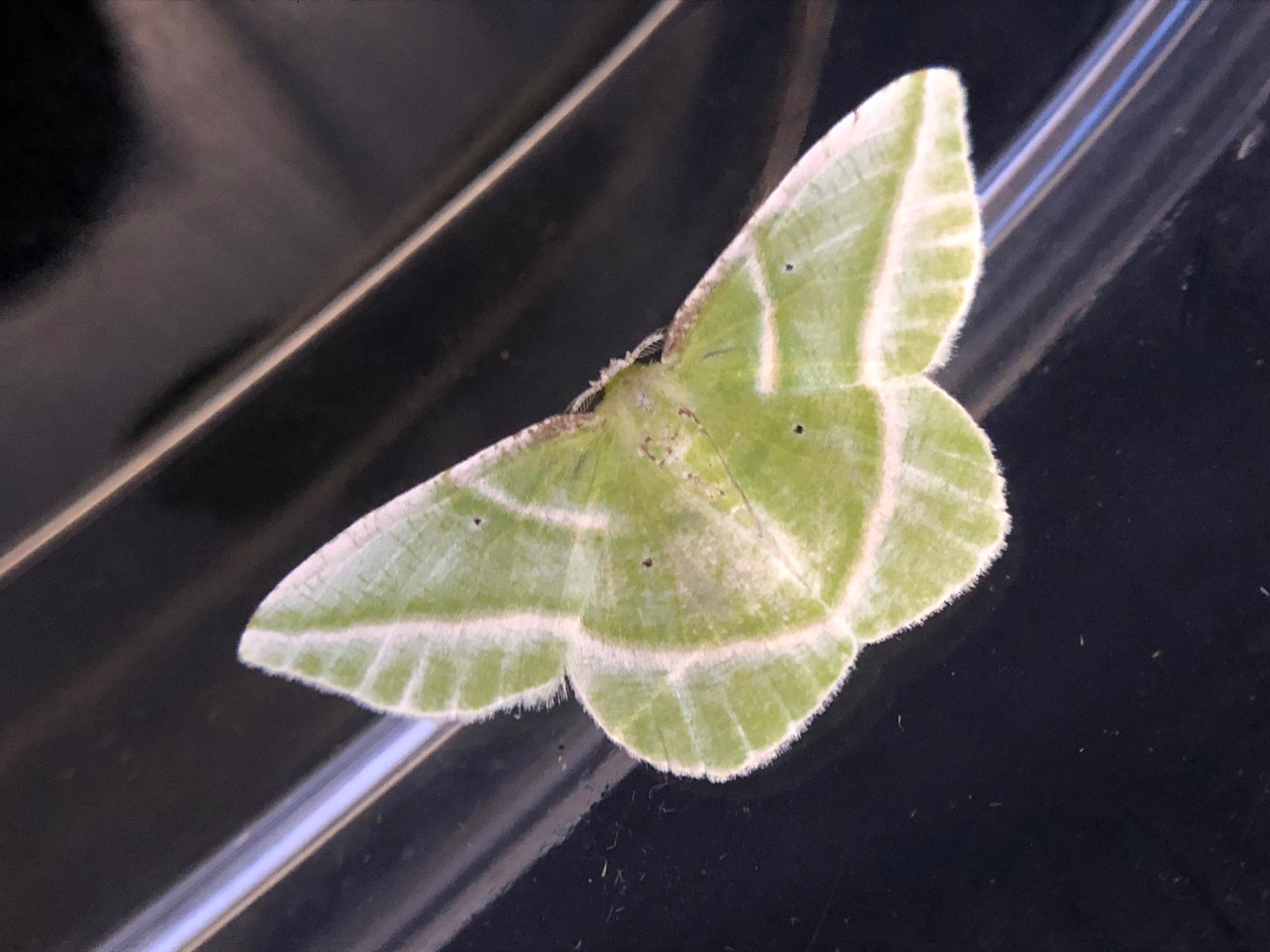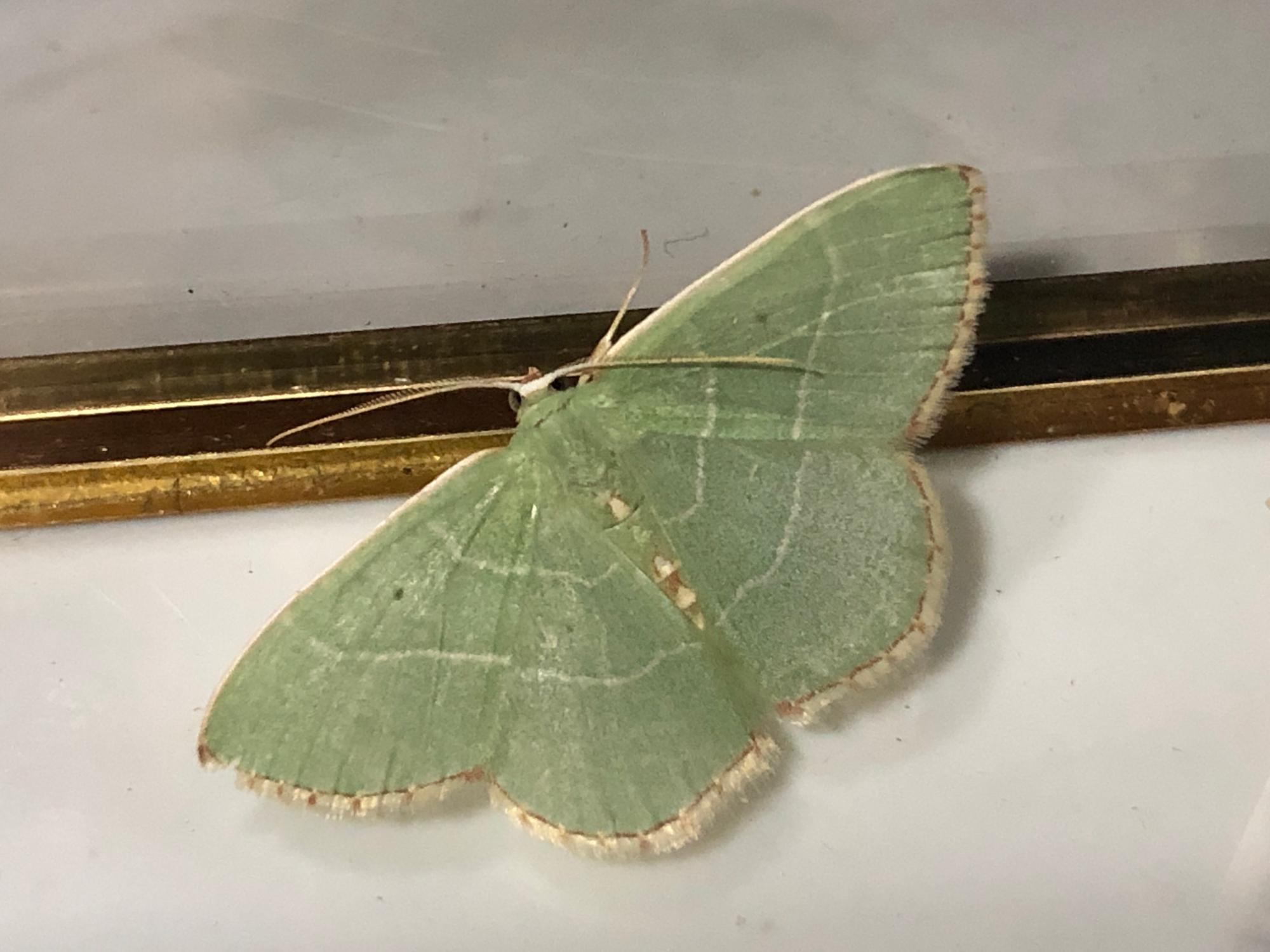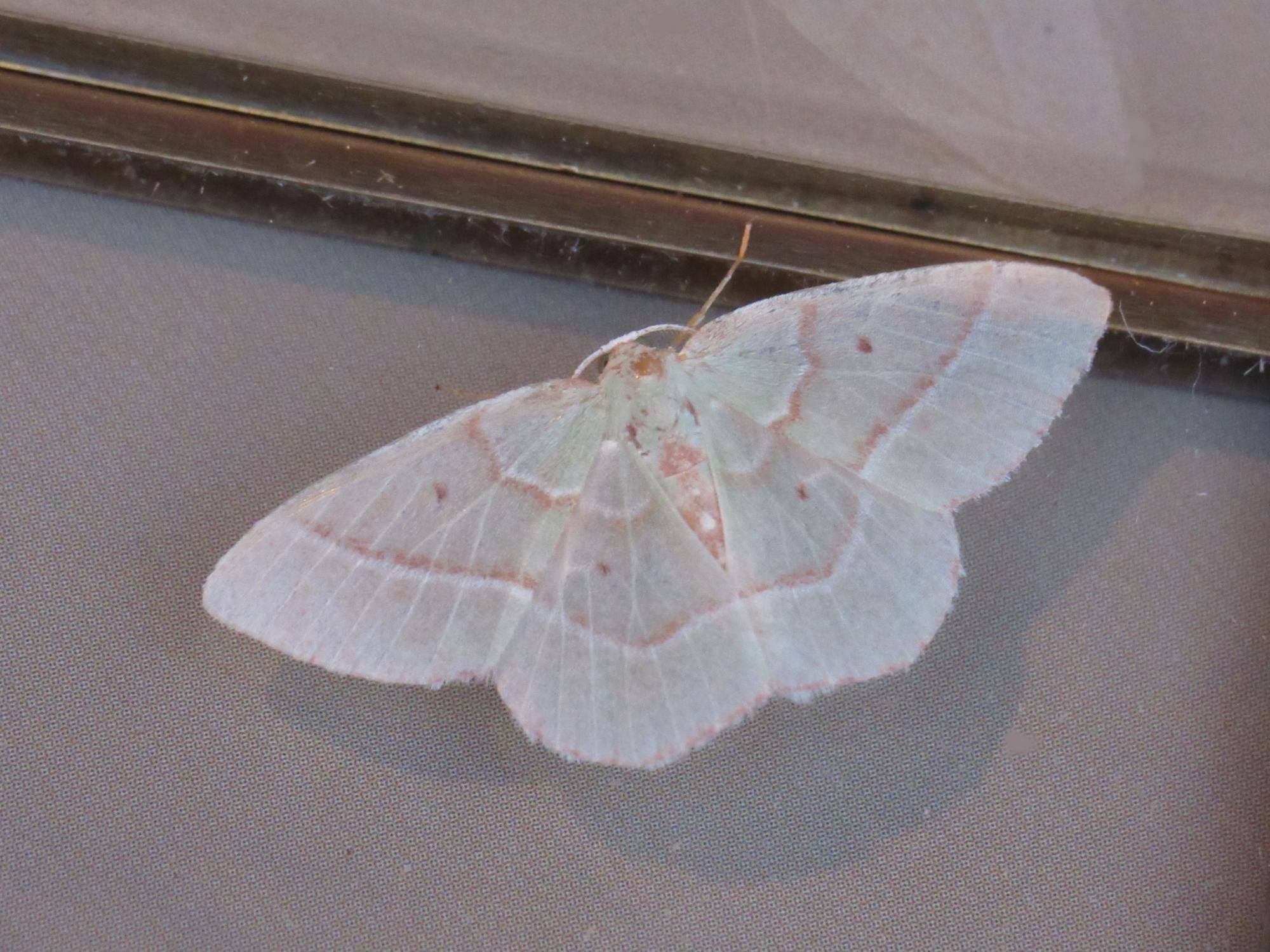EMERALD MOTHS
Wavy-lined Emerald moth. These moths are very common in our area.
Wavy-lined Emerald moths have several generations. I find them every month from May through November. (My latest sighting is November 5th.)
Blackberry Looper moth. I have found these moths from May through September. The lines on their wings are straighter than the lines on a Wavy-lined Emerald.
Blackberry Looper. You can see how tiny this moth is by comparing it to the clover leaf it is resting on.
Red-fringed Emerald moth. Notice the red and white dots on the front of its abdomen, and the tiny red stitches along the bottom edge of the wings.

Red-fringed Emerald, hiding under a leaf. Photographed in the Hocking Hills area (eastern Ohio) in April 2016.
This is the brown form of the Red-fringed Emerald. This species has both green and tan forms.
The Bad-wing Moth. This species was named by early moth collectors who had difficulty spreading the wings of deceased specimens. Bad-wing Moths are similar to emerald moths, but their wings are more elongated.

Another Wavy-lined Emerald moth at my UV lights.
Showy Emerald moth, attracted with UV light on August 1, 2021. This is the only Showy Emerald I have found at my home lights. The caterpillars eat poison ivy and sumacs, and there are plenty of both around my house, so you would think that I would see this species more often!

Red-fringed Emerald moth. I find this species every month from April through August.
Another Red-fringed Emerald at my moth lights.
I have found Bad-wings at my lights every month from April through August.

This Red-fringed Emerald appears to be an intermediate form. It is mostly green but has some brownish speckling.
Another apparent intermediate form of the Red-fringed Emerald. This one was very unusual, with reddish-brown lines against the green background.
Showy Emerald moth, photographed at Hocking Hills on May 11, 2024.